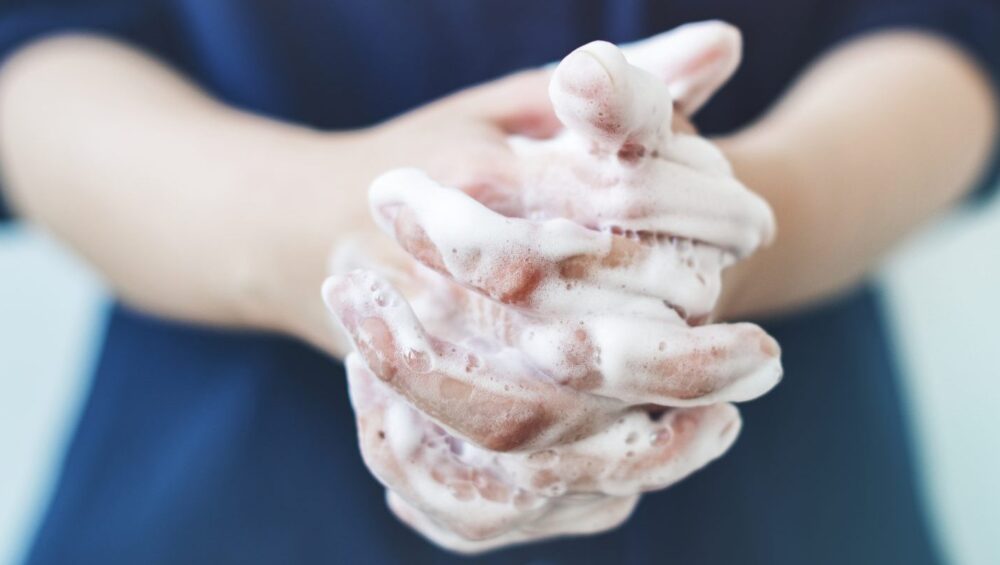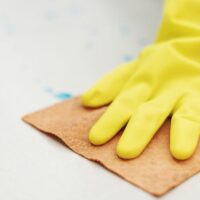 by Autumn Ryan, Founder and CEO, Aseptic Health, LLC
by Autumn Ryan, Founder and CEO, Aseptic Health, LLC
How long can a germ live? Over the past several months—as the pandemic unfolded—you may have heard conflicting information.
- Timeline March 24, 2020: National Institutes of Health reports: “Study suggests new coronavirus may remain on surfaces for days.” The article goes on to say: “According to the CDC, it may be possible to contract the virus responsible for the current outbreak, SARS-CoV-2, by touching a surface or object with the virus on it and then touching your face. However, SARS-CoV-2 is believed to mostly spread from person-to-person through respiratory droplets produced when an infected person coughs or sneezes.”
- Timeline August 21, 2020 WebMD asks: How long does the coronavirus live on surfaces? The answer “The coronavirus can live for hours to days on surfaces like countertops and doorknobs. How long it survives depends on the material the surface is made from.”
- Metal – 5 days
- Plastic – 2 to 3 days
- Cardboard – 24 hours
- The article continues, “Keep in mind that researchers still have a lot to learn about the new coronavirus. But you’re probably more likely to catch it from being around someone who has it than from touching a contaminated surface.”
- Timeline October 13, 2020: An Infectious Disease Special Edition reports: “The duration that SARS-CoV-2 can survive on surfaces depends on many factors—such as the type of surface—but a recent study found that it can last for almost a month on some surfaces.”
Research is ongoing and our guess is that the information will continue to change. At least that is how information has come about regarding other viruses and bacteria. So how long can a germ live in a room? On your counters? Your desk? Your remote control?
Is A Germ Infectious Its Whole Life?
The length of time a germ remains infectious depends mostly on the type of germ it is and what type of surface the germ has landed on. We know that the smallpox virus can remain infectious for years when stored at room temperature. Fortunately, smallpox was officially eradicated world-wide in 1980.
The AIDS virus is only infectious for a few hours. Hepatitis B, on the other hand may be infectious for up to a week. In fact, quite a few common diseases seem to fall into the several days to several weeks category.
The Common Cold
A variety of viruses can trigger the common cold, and you’re more likely to come into contact with them on hard, nonporous surfaces like desktops and handrails. Honestly, they can linger there for days, but fortunately they only remain infectious for about 24 hours. Cold viruses can also live on the skin, but their survival time on skin and hair is less than 24 hours.
The Flu
Viruses that cause influenza can survive in the air as droplets for hours and live on hard surfaces like phones and keyboards for up to 24 hours. Infectious flu viruses are no longer a threat after about five minutes, but they can make you very sick if you’re unlucky enough to come into contact with them when they’re viable.
Stomach Flu
A highly contagious virus that triggers stomach cramps, vomiting, and diarrhea is the norovirus. The germs can spread through small droplets that travel through the air before settling on surfaces like elevator buttons, table tops, and clothing. Norovirus isn’t quite as contagious on porous materials such as fabrics, but they can survive on hard surfaces for days or weeks if the conditions are favorable.
MRSA
Methicillin-resistant Staphylococcus aureus (MRSA) bacteria are capable of living for days or weeks on hard surfaces. And MRSA is resistant to antibiotics unlike other staph infections.
Protecting Yourself From Cross-Contamination
So the question moves from “how long can a germ live” to “how do we protect ourselves from germs?” And that is a lesson in protecting yourself from cross-contamination.
Cross-contamination is a transfer of disease-causing germs from one substance to another. In the kitchen that can be from chicken infected with Salmonella to the cutting board which you accidentally use to cut up some raw salad vegetables before disinfecting.
In my work as a janitor, I have seen some gross examples of cross-contamination…like the wet, gray rag the waitress uses to wipe the table. And my favorite, dirty mop water being spread and re-spread on floors.
Parents beware, if your baby’s pacifier lands on a public floor, do not give it back without sanitizing.
Just about everything we touch is covered with germs. Fortunately, our immune system protects us from many of these bacteria and viruses. But some basic hygiene, like washing your hands thoroughly before eating, can reduce the chance of infection significantly.
Cleaning regularly to disinfect your space will also reduce your susceptibility.
For more disinfecting and cleaning tips be sure and subscribe to our blog.





